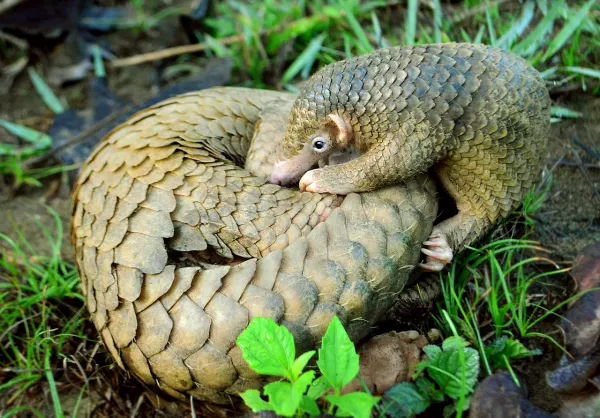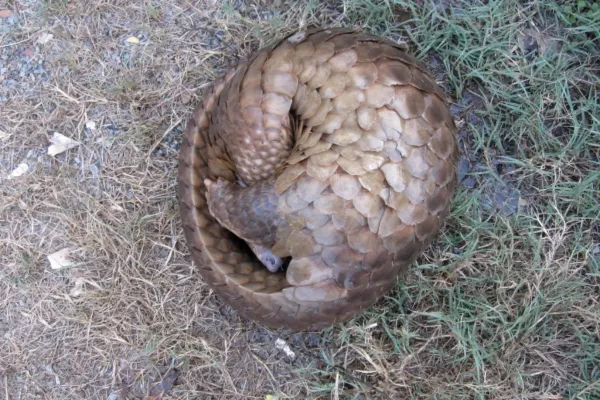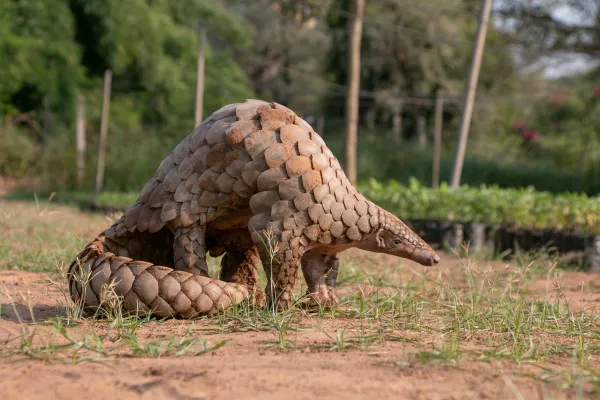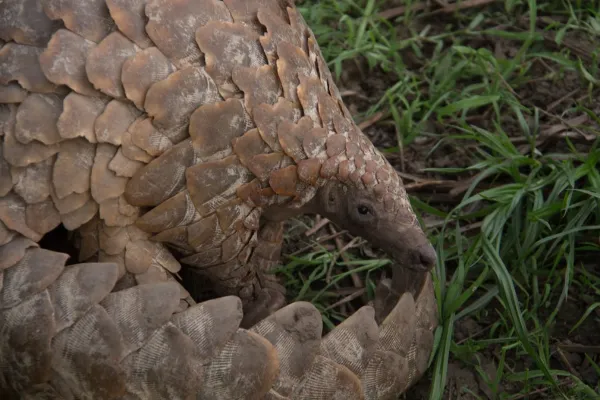Pangolins are one of the most unique mammals on Earth. Although they look somewhat like armadillos, taxonomically they are more closely related to carnivores. Sadly, they are the most trafficked wild mammals in the world, which has pushed all known pangolin species to the brink of extinction.
In this article, we’ll explore whether pangolins are endangered, what threats they face, how many are left in the wild, and—most importantly—what you can do to help protect them.

Yes, all eight recognized pangolin species are endangered, according to the IUCN Red List of Threatened Species. These species—four from Asia and four from Africa—are all experiencing population declines, and each has a different level of extinction risk, ranging from Vulnerable to Critically Endangered.
There is currently no sign of population recovery, and the continued pressure from illegal wildlife trafficking is making their future increasingly uncertain.
Accurately estimating the global population is difficult due to their elusive and nocturnal behavior. However, here’s what researchers have found by species:
Temminck’s Ground Pangolin (Smutsia temminckii)
Estimated to have 16,000 to 24,000 mature individuals in South Africa alone. No global census data is available.
White-bellied Tree Pangolin (Phataginus tricuspis)
Once common across African forests, this species has become increasingly rare due to habitat loss and hunting.
Long-tailed Tree Pangolin (Manis tetradactyla)
The least studied species due to its remote habitat and secretive nature.
Indian Pangolin (Manis crassicaudata)
Very few records exist. Considered rare, with low population density across India.
Chinese Pangolin (Manis pentadactyla)
A 2008 survey found approximately 64,000 individuals in mainland China, with another 15,000 in Taiwan—where local laws have led to some population recovery. In contrast, the species has disappeared entirely from Bangladesh.
Philippine Pangolin (Manis culionensis), Sunda Pangolin (Manis javanica), and Giant Ground Pangolin (Smutsia gigantea)
These species are highly endangered, with unknown but declining populations due to poaching and habitat destruction.

Let’s take a closer look at what makes pangolins so fascinating and why they are irreplaceable in the animal kingdom:
They are the only mammals covered in scales—these overlapping keratin plates can account for up to 20% of their body weight.
Their defense mechanism includes rolling into a tight, armored ball when threatened. Their exposed scales act like sharp blades, deterring even large predators such as tigers.
They emit a strong-smelling fluid from anal glands to ward off threats.
Distribution: Found in tropical regions of Africa and Asia, including forests, savannas, and grasslands.
Nocturnal with poor vision, relying on a highly developed sense of smell and a long, muscular snout for locating prey.
Habitat: Some species dig burrows, while others live in tree hollows. All are excellent climbers, and some are skilled swimmers.
Powerful claws are used to dig into ant nests and termite mounds.
Diet: Strictly insectivorous, feeding mainly on ants and termites using a long, sticky tongue that can extend up to 40 cm beyond the mouth.
They walk on their wrists, keeping their claws curled under to avoid damaging them.
Their tails are long and muscular, used for balance, climbing, and in some species, even as a prehensile limb.

Pangolins are facing extinction primarily due to human exploitation:
Their meat is considered a delicacy in some cultures.
Over 300,000 Asian pangolins were trafficked globally in the past two decades.
Despite international bans, black market demand continues to drive poaching.
Pangolin scales have been falsely believed to have medicinal properties in some branches of traditional medicine.
Scales are also sold as love charms, ornaments, or used in ceremonial clothing in some cultures.
It’s important to note: Modern Chinese medicine no longer uses pangolin parts, and China has declared these animals as Category I protected species.
Consuming wild animals increases the risk of zoonotic disease transmission, as seen with the COVID-19 outbreak.
In some regions, fear led to mass hunting of pangolins despite lack of scientific evidence.
The real issue is not the animals themselves, but human encroachment into wild habitats, increasing contact and disease risk.
All pangolin species are now listed in Appendix I of CITES, banning all international trade of wild-caught individuals or their parts.
Poaching, trafficking, or using pangolins for commercial purposes is now illegal worldwide.

Although pangolins face serious threats, there are meaningful steps we can all take to help:
Educate yourself and others about pangolins. The more people understand their importance, the less likely they are to unknowingly support harmful practices.
Whether it’s meat, scales, charms, or souvenirs—avoid any product derived from endangered species, especially pangolins.
Organizations like the World Wildlife Fund (WWF) and the Environmental Investigation Agency (EIA) are actively working to protect pangolins through anti-poaching programs and habitat conservation.
Support stricter legal protections and report any illegal wildlife trade. Responsible eco-tourism and ethical choices can make a difference.
Pangolins are extraordinary creatures that play a crucial role in ecosystems by controlling insect populations. Yet they are quietly disappearing due to ignorance, greed, and misinformation.
By spreading knowledge, rejecting the wildlife trade, and supporting real conservation, we can help ensure that pangolins don't vanish from our world forever.
References
IUCN Red List (2022) Pangolin, global geographical scope. Available at: https://www.iucnredlist.org/search?query=Pangolins&searchType=species
Environmental Investigation Agency (n.f.) Saving pangolins from extinction. Available at: https://eia-international.org/wildlife/helping-pangolins/saving-pangolins-from-extinction/
World Wildlife (n.f.) The fight to stop pangolin extinction. Available at: https://www.worldwildlife.org/stories/the-fight-to-stop-pangolin-extinction
Bibliography
Beatty, R., Beer, A., & Deeming, C. (2010). The Book of Nature. Great Britain: Dorling Kindersley.
animal tags: Pangolins
We created this article in conjunction with AI technology, then made sure it was fact-checked and edited by a Animals Top editor.